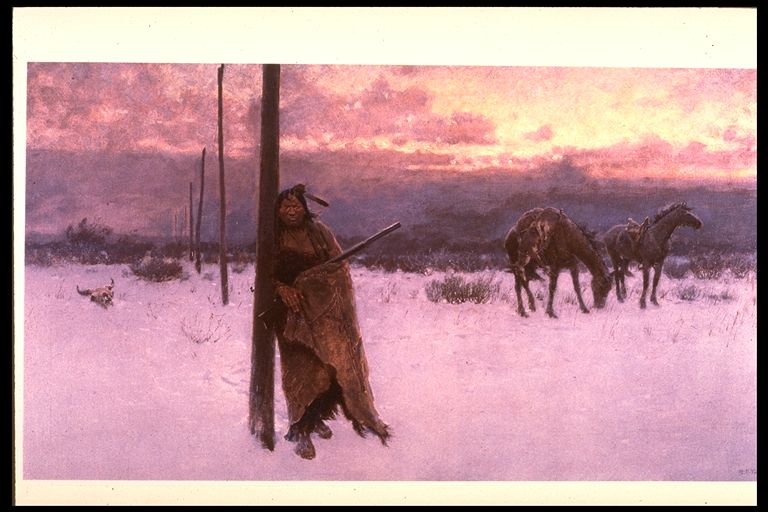Henry Farney. The Song of the Talking Wire (1904).


Henry Farney. The Song of the Talking Wire (1904).
By 1904 the sense of ennobling sorrow an American viewer
might have felt for the Vanishing American had turned, with
Native American population and fortunes at a nadir, into a form
of nostalgia, here captured by Henry Farney. This painting was,
according to Julie Schimmel, conceived during a visit by the
artist to Fort Yates in the Dakota Territory. Farney
"apparently observed an Indian named Long Day listening at a
telegraph pole so that he could tell fellow Indians that he had
heard spirit voices over the wires, thus proving his ability to
become a medicine man." [Carter, Farney, 33] Long Day uses the
tools of civilization to assist in the continuity of his own
culture. But Farney turns the scene around to illustrate the
Indian listening at the telegraph pole, as if for his own
demise.
"The telegraph wires symbolize white progress, which
dispossesses Indians of their culture," -the straight wire being
as it were the antithesis to the sacred hoop, willfully cleaving
the harmonious circle of nature. "Leaning against a telegraph
pole, the lone Indian is surrounded by death--the buffalo skull
and barren, snow-covered landscape. He carries the white man's
gun yet clings to his own traditions, wearing moccasins and
buffalo hide and living by the hunt, as suggested by the dead
deer hanging from his saddle. His inability to change will
finally defeat him."
Schimmel notes that Farney depicted Long Day incorrectly as
garbed in a robe actually "worn by females to celebrate puberty
rites." To the artist the mistake didn't matter; the cloak
signifies his tribal culture.
Reference: Julie Schimmel, "Inventing 'The Indian," in THE WEST
AS AMERICA: REINTERPRETING IMAGES OF THE FRONTIER, Washington
and London: Smithsonian Institution Press, 1991, pp. 171-72,
188.
Carter, Denny. Henry Farney. New York: Watson-Guptill for
Cincinnati Art Museum.